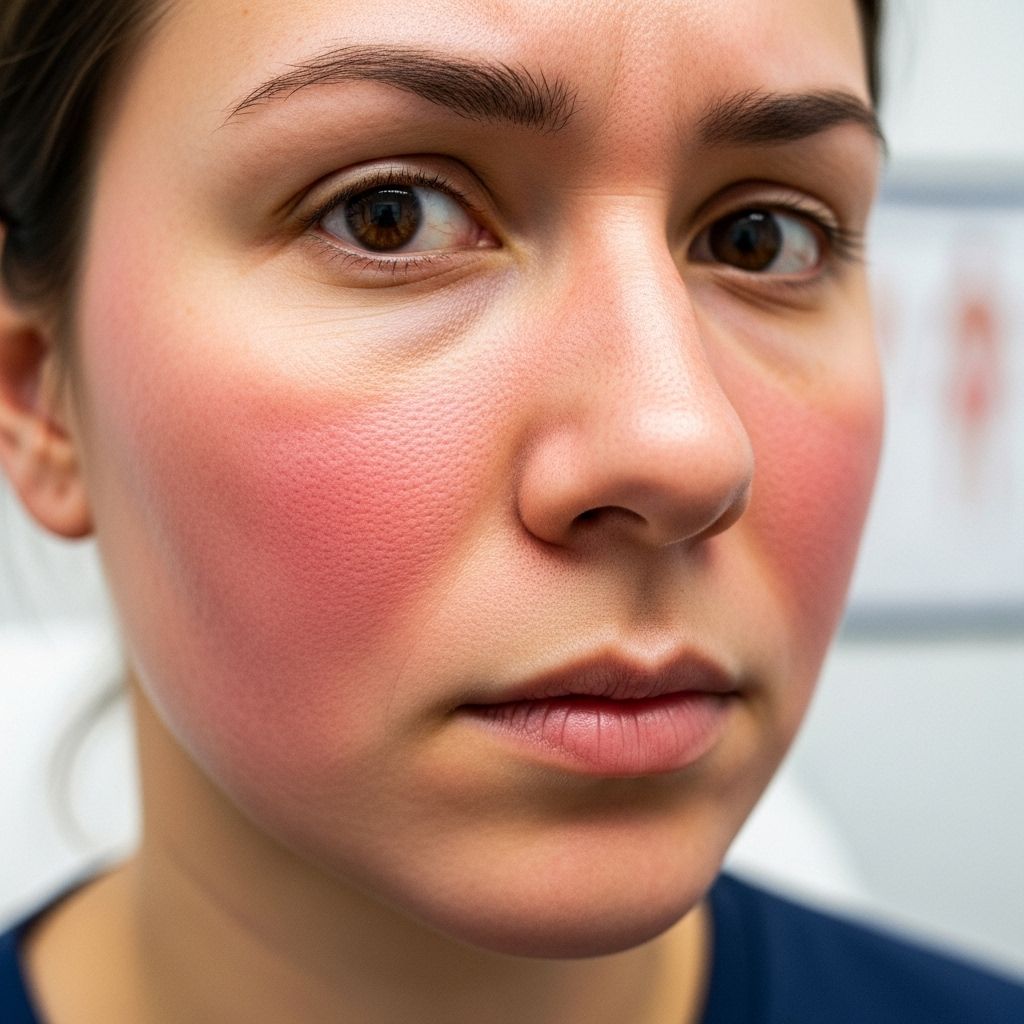Managing Skin Flushing: Causes and Fixes
Target hidden triggers and calm flare-ups for a more even, comfortable complexion.

Table of Contents
- What is Skin Flushing?
- Causes of Skin Flushing
- Emotional Causes
- Medical Causes
- Lifestyle and Environmental Causes
- Managing Skin Flushing
- Frequently Asked Questions
What is Skin Flushing?
Skin flushing, or blushing, is a condition where the skin turns red or darker due to increased blood flow. This increased blood flow causes the blood vessels beneath the skin to dilate, leading to the visible redness often seen on the face, neck, or chest.
Flushing can occur in response to various triggers, ranging from emotional states like anxiety or embarrassment to physical activities and certain medical conditions. While it is generally not a serious medical issue, frequent or severe flushing can be a symptom of an underlying condition and may require medical attention.
Causes of Skin Flushing
Skin flushing can result from a variety of factors, including emotional, medical, and lifestyle-related causes.
Emotional Causes
Emotional states such as stress, anxiety, embarrassment, anger, or excitement are common triggers for skin flushing. These emotions can cause a sudden increase in blood flow to the face and neck, leading to visible redness.
Medical Causes
Several medical conditions can cause skin flushing, including:
- Menopause: The decrease in estrogen levels during menopause can lead to hot flashes, which often cause skin flushing.
- Rosacea: This chronic skin condition is characterized by cycles of flushing and redness, often exacerbated by stress, spicy foods, and sunlight.
- Carcinoid Syndrome: A condition associated with carcinoid tumors, which can cause flushing among other symptoms like diarrhea and wheezing.
- Medications: Certain drugs, such as those used to treat diabetes and high cholesterol, can cause flushing as a side effect.
Lifestyle and Environmental Causes
In addition to emotional and medical factors, lifestyle and environmental elements can also lead to skin flushing:
- Hot or Spicy Foods: Consuming foods that are hot or spicy can increase blood flow and cause flushing.
- Alcohol Consumption: Alcohol can widen blood vessels, leading to flushing. For some individuals, this may be a sign of alcohol intolerance.
- Physical Activity: Engaging in exercise can result in increased skin flushing due to a rise in body temperature.
- Sun Exposure: Spending too much time in the sun or getting sunburned can lead to flushing.
Managing Skin Flushing
Managing skin flushing involves identifying and addressing the underlying causes. Here are some strategies to reduce flushing:
Home Care
Avoid triggers that cause flushing, such as:
- Hot or Spicy Foods
- Alcohol
- Stress and Anxiety: Engage in stress-reducing activities like deep breathing or meditation.
- Sun Exposure: Use sunscreen and protective clothing when outdoors.
Medical Treatment
If skin flushing is due to an underlying medical condition, treating the condition itself can help manage the flushing. For example, hormonal therapies may be prescribed for menopause-related hot flashes.
Frequently Asked Questions
Q: Is skin flushing a serious condition?
Skin flushing is generally not serious but can be a symptom of an underlying condition. If it persists or is accompanied by other symptoms, consult a healthcare provider.
Q: How can I reduce skin flushing?
To reduce skin flushing, avoid triggers like hot foods, alcohol, and stress. Engage in stress management techniques and maintain a healthy lifestyle.
Q: Can medications cause skin flushing?
Yes, certain medications can cause skin flushing as a side effect. If you experience frequent or severe flushing, consult with your healthcare provider about potential medication side effects.
Q: Is skin flushing related to rosacea?
Yes, rosacea is a condition that can cause skin flushing among other symptoms. Treatment for rosacea may help manage flushing.
By understanding the causes and implementing appropriate management strategies, individuals can effectively reduce the occurrence of skin flushing and maintain healthier skin.
References
- https://www.healthline.com/health/skin-blushing-flushing
- https://resources.healthgrades.com/right-care/symptoms-and-conditions/flushed-skin
- https://my.clevelandclinic.org/health/symptoms/skin-flushing
- https://medlineplus.gov/ency/article/003241.htm
- https://www.medicalnewstoday.com/articles/323219
- https://www.betterhealth.vic.gov.au/health/conditionsandtreatments/blushing-and-flushing
- https://www.topdoctors.co.uk/medical-dictionary/flushed-face/
- https://dermnetnz.org/topics/flushing
- https://www.mayoclinic.org/diseases-conditions/rosacea/symptoms-causes/syc-20353815
Read full bio of Sneha Tete












